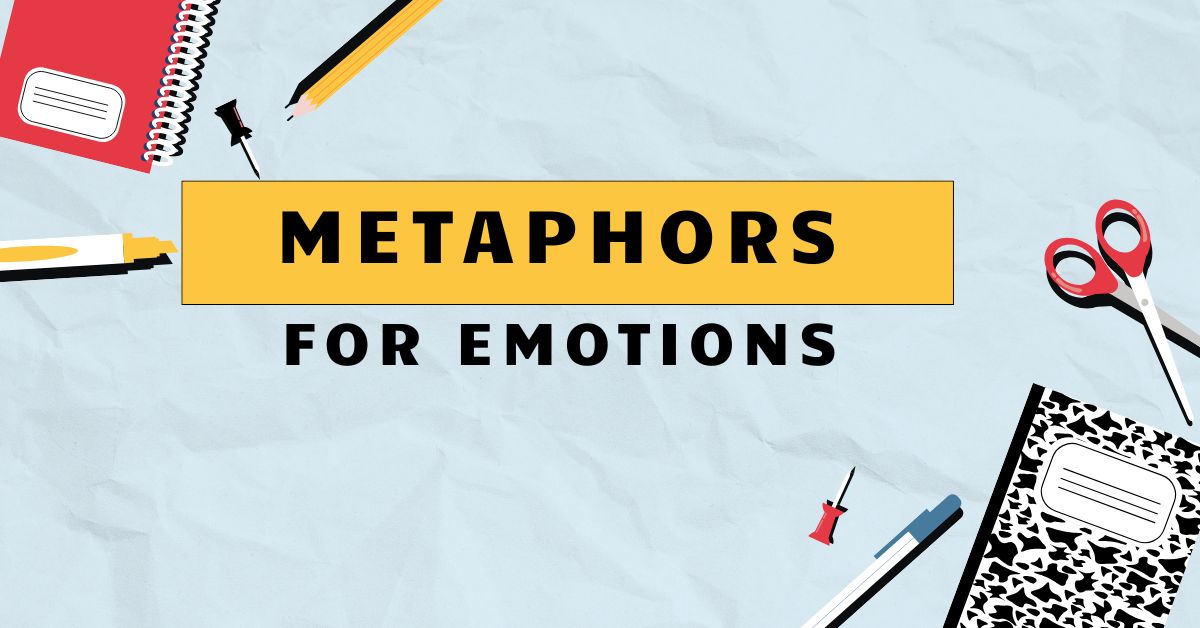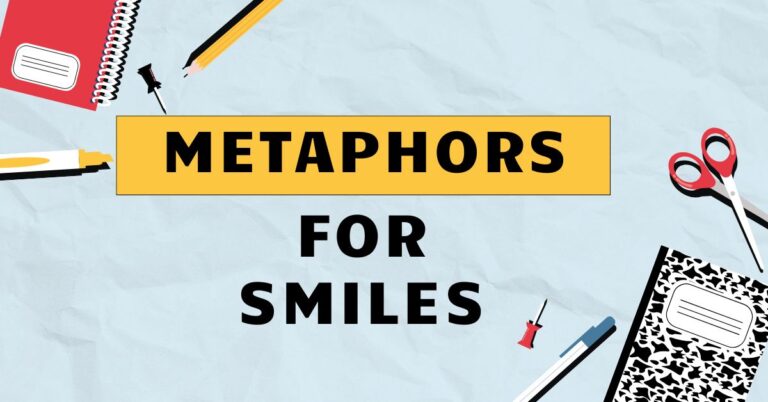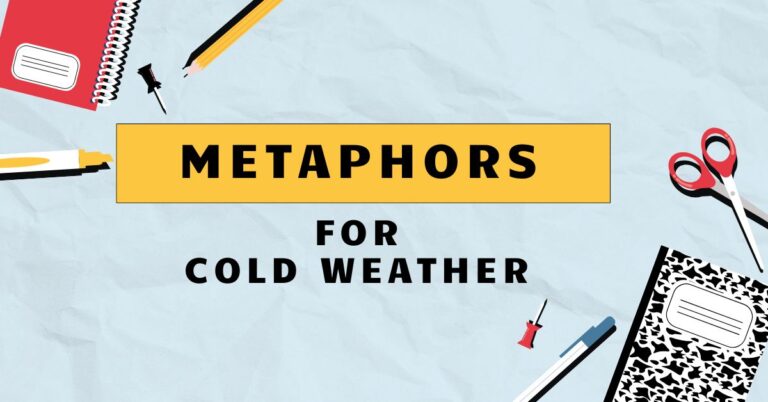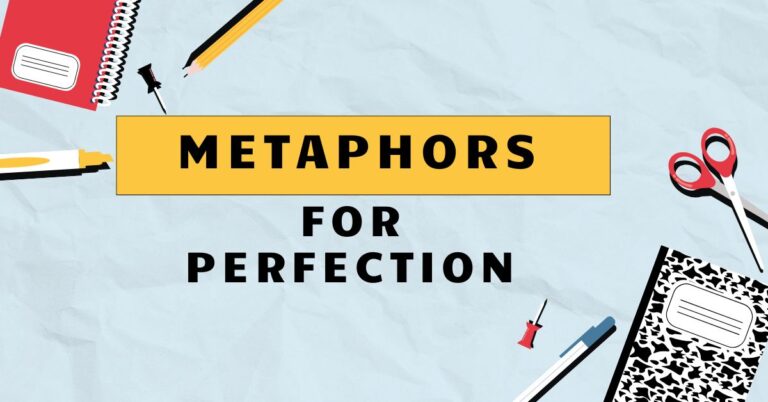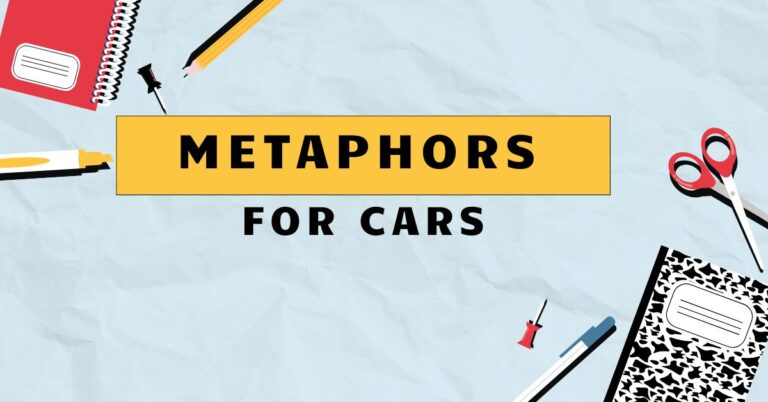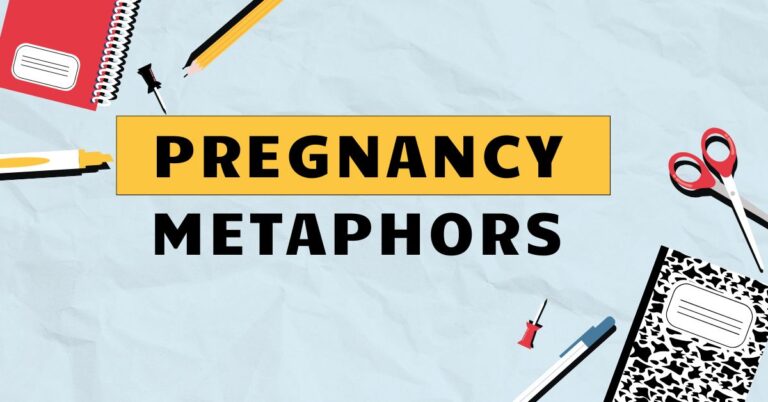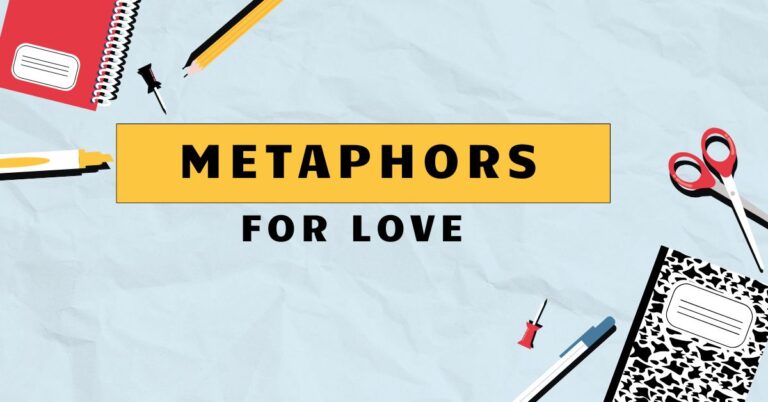33 Metaphors for Emotions: Expressing Feelings Figuratively
Understanding how we use metaphors to describe emotions is crucial for mastering English and expressing ourselves effectively. Metaphors allow us to convey complex feelings in a vivid and relatable way, enriching our communication.
This article offers a detailed exploration of emotional metaphors, their structure, types, usage rules, and common mistakes. Whether you are an English language learner or a native speaker seeking to refine your expressive capabilities, this guide will provide you with the knowledge and practice needed to harness the power of emotional metaphors.
Table of Contents
- Introduction
- Definition of Metaphor for Emotions
- Structural Breakdown
- Types and Categories of Emotional Metaphors
- Examples of Emotional Metaphors
- Usage Rules
- Common Mistakes
- Practice Exercises
- Advanced Topics
- FAQ
- Conclusion
Definition of Metaphor for Emotions
A metaphor for emotions is a figure of speech that describes a feeling or emotional state by comparing it to something else, without using “like” or “as.” It transfers qualities or characteristics from one thing (the source domain) to an emotion (the target domain), providing a more vivid and relatable understanding. This indirect comparison allows us to express abstract emotional experiences in concrete terms.
Metaphors serve several key functions in language. They enhance expressiveness by adding layers of meaning and imagery.
They aid understanding by relating unfamiliar emotions to familiar concepts. Furthermore, they evoke emotional responses in the listener or reader, creating a stronger connection.
The context in which a metaphor is used significantly influences its interpretation. Cultural background often shapes the understanding and acceptance of specific metaphors.
Emotional metaphors are classified based on the type of comparison they make. Some common classifications include: container metaphors (e.g., “filled with joy”), temperature metaphors (e.g., “burning with anger”), weight metaphors (e.g., “weighed down by sadness”), and color metaphors (e.g., “feeling blue”).
The function of these metaphors is to provide a more nuanced and relatable description of internal emotional states. In literature, metaphors are used to create powerful imagery and deepen character development.
In everyday conversation, they help us communicate our feelings more effectively and empathetically.
Structural Breakdown
The structure of an emotional metaphor involves two main components: thetarget domainand thesource domain. The target domain is the emotion being described (e.g., sadness, anger, joy).
The source domain is the concept or object used to describe the emotion (e.g., a dark cloud, fire, sunshine). The metaphor works by transferring qualities from the source domain to the target domain.
For example, in the metaphor “He was drowning in sorrow,” sorrow (target domain) is described as water (source domain), implying an overwhelming and inescapable feeling.
The effectiveness of a metaphor depends on the clarity and relevance of the connection between the source and target domains. A strong metaphor creates a vivid and easily understood image, while a weak metaphor may be confusing or ineffective.
The underlying principle isconceptual metaphor theory, which suggests that our understanding of abstract concepts is often based on concrete experiences. For instance, the concept of anger is frequently understood in terms of heat or pressure, leading to metaphors like “boiling with rage” or “under pressure.” Emotional metaphors often rely on shared cultural understandings and embodied experiences.
Metaphors can be extended or elaborated to create more complex and detailed descriptions. An extended metaphor continues the comparison throughout a sentence, paragraph, or even an entire text.
For example: “Her grief was a deep ocean, and she felt herself sinking further into its dark depths. The waves of sorrow crashed over her, threatening to pull her under completely.
She struggled to keep her head above water, gasping for air, but the weight of her loss was too heavy to bear.” This extended metaphor uses the image of an ocean to convey the intensity and overwhelming nature of grief.
Types and Categories of Emotional Metaphors
Emotional metaphors can be categorized based on the type of imagery they evoke. Here are some common categories:
Container Metaphors
Container metaphors describe emotions as if they are contained within a physical space or container. These metaphors often use words like “full,” “empty,” “overflowing,” and “bottled up.” The idea is that emotions can be held inside or released from a container.
Temperature Metaphors
Temperature metaphors associate emotions with heat or cold. Hot emotions, like anger and passion, are often described as “burning” or “fiery,” while cold emotions, like indifference and sadness, are described as “icy” or “chilling.”
Weight Metaphors
Weight metaphors use the concept of heaviness or lightness to describe emotions. Sadness and depression are often described as “weighing someone down,” while happiness and joy are described as “lifting someone up.”
Color Metaphors
Color metaphors associate emotions with specific colors. For example, “feeling blue” describes sadness, while “seeing red” describes anger.
These metaphors draw on the cultural associations of different colors with particular emotions.
Natural Force Metaphors
Natural force metaphors use the imagery of elements like storms, waves, or earthquakes to describe powerful or overwhelming emotions. These metaphors emphasize the uncontrollable and destructive aspects of certain feelings.
Physical Sensation Metaphors
Physical sensation metaphors describe emotions in terms of physical sensations such as tingling, numbness, or pressure. These metaphors highlight the embodied nature of emotional experience.
Examples of Emotional Metaphors
Below are examples of emotional metaphors, categorized by type. Each table provides a range of examples to illustrate how these metaphors are used in different contexts.
Container Metaphor Examples
This table provides examples of container metaphors, illustrating how emotions are described as being contained within a space.
| Metaphor | Explanation |
|---|---|
| He was filled with joy. | Joy is portrayed as filling a container (the person). |
| She was brimming with excitement. | Excitement is seen as filling a container to the point of overflowing. |
| The room was charged with tension. | Tension is described as filling the space of the room. |
| He had to bottle up his anger. | Anger is contained, like a liquid in a bottle. |
| She was drained of all emotion. | Emotion is seen as something that can be emptied from a container. |
| Her heart was bursting with love. | Love is so abundant it’s about to break the container (her heart). |
| He felt empty inside after the loss. | Loss has created a void or emptiness within him. |
| She was overflowing with gratitude. | Gratitude is so plentiful it’s spilling over. |
| The atmosphere was thick with anticipation. | Anticipation is dense and fills the space. |
| He was consumed by jealousy. | Jealousy has completely filled and taken over him. |
| She felt hollow inside after the argument. | The argument left her feeling empty and devoid of emotion. |
| He was engulfed in despair. | Despair has surrounded and completely covered him. |
| She was swimming in sorrow. | Sorrow is a vast container that she is immersed in. |
| He felt suffocated by his responsibilities. | Responsibilities are overwhelming and limiting, like being trapped in a small space. |
| She was buried under a mountain of stress. | Stress is a heavy burden that is weighing her down. |
| He was trapped in a cycle of negativity. | Negativity has confined him, making it difficult to escape. |
| His patience ran out. | Patience is depicted as a substance that can be depleted. |
| She was awash with relief. | Relief is abundant and surrounds her completely. |
| He had a reservoir of calm. | Calmness is stored within him, ready to be drawn upon. |
| She was drowning in self-pity. | Self-pity is overwhelming and inescapable. |
| He couldn’t contain his excitement. | Excitement is too strong to be held back. |
| She was full of hope. | Hope is filling her up and giving her strength. |
| He was brimming with ideas. | Ideas are plentiful and about to overflow. |
| She was steeped in nostalgia. | Nostalgia has completely permeated her thoughts and feelings. |
Temperature Metaphor Examples
This table illustrates how temperature metaphors are used to describe emotions, associating them with heat or cold.
| Metaphor | Explanation |
|---|---|
| She was burning with anger. | Anger is described as a hot, intense flame. |
| His passion was fiery and intense. | Passion is portrayed as a hot and energetic flame. |
| She gave him a cold look. | Her look is described as lacking warmth and affection. |
| He was seething with resentment. | Resentment is a simmering, boiling anger. |
| Her heart froze when she heard the news. | The news caused her to feel emotionally numb and distant. |
| He had a warm smile. | His smile is inviting, friendly, and comforting. |
| She felt a chill of fear. | Fear is a sudden, cold sensation. |
| His anger boiled over. | His anger reached a breaking point and exploded. |
| She was lukewarm about the idea. | She felt indifferent and unenthusiastic about the idea. |
| He had a heated argument with his boss. | The argument was intense and passionate. |
| She felt a warm glow of satisfaction. | Satisfaction is a comforting and pleasant feeling. |
| Her words were icy and cutting. | Her words were cold, harsh, and hurtful. |
| He was simmering with frustration. | Frustration is a low-level, constant annoyance. |
| She felt a cold dread creep over her. | Dread is a chilling and unsettling feeling. |
| His love for her was burning brightly. | Love is a strong, passionate flame. |
| She was coldly indifferent to his pleas. | She showed no emotion or concern for his requests. |
| He felt a warm rush of affection. | Affection is a sudden, pleasant feeling. |
| His temper was red-hot. | He was extremely angry and volatile. |
| She felt a cold wave of despair. | Despair is a sudden, overwhelming feeling. |
| He was burning up with feverish excitement. | Excitement is intense and feverish. |
| She gave him a frosty reception. | Her welcome was cold and unwelcoming. |
| He was fired up about the project. | He was enthusiastic and motivated about the project. |
| Her heart was ice-cold. | She was unfeeling and lacked compassion. |
| He felt a warmth spread through his chest. | He experienced a comforting and pleasant emotion. |
| She was frozen with fear. | Fear has paralyzed her, making her unable to move or act. |
Weight Metaphor Examples
This table provides examples of weight metaphors, describing emotions in terms of heaviness or lightness.
| Metaphor | Explanation |
|---|---|
| He was weighed down by sadness. | Sadness is a heavy burden he is carrying. |
| She felt light as a feather after the good news. | The good news made her feel carefree and joyful. |
| The responsibility pressed heavily on his shoulders. | Responsibility is a heavy weight he is bearing. |
| He felt a heavy heart after the breakup. | The breakup caused him deep sadness and sorrow. |
| She was burdened by guilt. | Guilt is a heavy load she is carrying. |
| He felt lifted up by her encouragement. | Her encouragement made him feel more positive and hopeful. |
| The weight of his decision crushed him. | The decision was so difficult it caused him great emotional pain. |
| She felt a lightness of spirit after forgiving him. | Forgiveness made her feel free and unburdened. |
| He was laden with regret. | Regret is a heavy load he is carrying. |
| She felt buoyant with optimism. | Optimism made her feel light and cheerful. |
| The stress was weighing heavily on her mind. | Stress is a significant burden affecting her thoughts. |
| He felt a tremendous weight lifted from his shoulders. | A burden has been removed, bringing him great relief. |
| She was bogged down by negativity. | Negativity is hindering her progress and happiness. |
| He felt light-hearted and carefree. | He felt joyful and without worries. |
| The grief was an insurmountable weight. | Grief is an overwhelming burden that seems impossible to overcome. |
| She felt unburdened after sharing her secret. | Sharing her secret relieved her of a heavy weight. |
| He was saddled with debt and despair. | Debt and despair are heavy burdens he is carrying. |
| She felt weighed down by expectations. | Expectations are a heavy burden she is carrying. |
| He felt light as air after the vacation. | The vacation made him feel relaxed and carefree. |
| The guilt was a heavy cross to bear. | Guilt is a significant and painful burden. |
| She felt liberated and weightless. | She felt free from burdens and restrictions. |
| He was overwhelmed by responsibilities. | Responsibilities are too much to handle. |
| She felt a sense of relief wash over her. | Relief is a cleansing and freeing feeling. |
| He was crushed under the pressure. | Pressure was too much to bear. |
| She felt lighter and happier after the conversation. | The conversation lifted her spirits. |
Color Metaphor Examples
This table illustrates how color metaphors are used to describe emotions, associating them with specific colors.
| Metaphor | Explanation |
|---|---|
| She was feeling blue. | Blue is associated with sadness and melancholy. |
| He was seeing red. | Red is associated with anger and rage. |
| She was green with envy. | Green is associated with jealousy and envy. |
| He was in the pink of health. | Pink is associated with good health and vitality. |
| She had a yellow streak. | Yellow is associated with cowardice. |
| He was black with rage. | Black is associated with intense anger. |
| She painted a rosy picture of their future. | Rosy is associated with optimism and happiness. |
| He felt gray and lifeless. | Gray is associated with boredom and lack of energy. |
| She had a white as a ghost. | White is associated with fear and shock. |
| He was purple with indignation. | Purple is associated with outrage and anger. |
| She felt washed out and pale. | Lack of color is associated with exhaustion and weakness. |
| He was golden with happiness. | Golden is associated with joy and prosperity. |
| She had a dark outlook on life. | Dark is associated with pessimism and despair. |
| He was seeing the world through rose-colored glasses. | He had an overly optimistic view of the world. |
| She felt drained of color. | She felt emotionally exhausted and lifeless. |
| He was shades of gray morally ambiguous. | Gray represents uncertainty and lack of clear moral direction. |
| She was white with fear. | Fear drained the color from her face. |
| He was golden with success. | Success brought him joy and prosperity. |
| She had a sunny disposition. | Sunny is associated with cheerfulness and optimism. |
| He was seeing the world in black and white. | He had a simplistic and rigid view of the world. |
| She felt colorless and insignificant. | She felt lacking in personality and importance. |
| He was painted as the villain. | He was portrayed as evil and malicious. |
| She added color to his life. | She brought excitement and joy to his life. |
| He had a black mood. | He was in a dark and gloomy state of mind. |
| She was glowing with happiness. | She was radiant with joy and well-being. |
Natural Force Metaphor Examples
This table illustrates how natural force metaphors are used to describe emotions, associating them with elements like storms, waves, or earthquakes.
| Metaphor | Explanation |
|---|---|
| A storm of emotions raged within her. | Her emotions were intense and turbulent, like a storm. |
| He was hit by a wave of nostalgia. | Nostalgia overwhelmed him suddenly, like a wave. |
| The news struck her like an earthquake. | The news was shocking and devastating, like an earthquake. |
| She felt a tidal wave of grief wash over her. | Grief overwhelmed her in a powerful and unstoppable way. |
| His anger erupted like a volcano. | His anger exploded suddenly and violently. |
| A torrent of tears flowed down her face. | Tears streamed down her face uncontrollably, like a torrent. |
| The tension in the room was like a gathering storm. | Tension was building up, threatening to erupt. |
| He was swept away by a whirlwind of passion. | Passion consumed him completely and uncontrollably. |
| She felt a flood of memories rushing back. | Memories overwhelmed her in a sudden and abundant way. |
| The news was a thunderbolt out of the blue. | The news was sudden, shocking, and unexpected. |
| He was caught in a crosscurrent of emotions. | He was experiencing conflicting and confusing emotions. |
| She weathered the storm of criticism. | She endured and survived a period of intense criticism. |
| His love for her was like a raging fire. | His love was intense, passionate, and consuming. |
| She felt a hurricane of sorrow tearing through her. | Sorrow was destructive and overwhelming, like a hurricane. |
| He was engulfed by a sea of despair. | Despair surrounded and overwhelmed him completely. |
| She was caught in a riptide of anxiety. | Anxiety pulled her under and made it difficult to escape. |
| His emotions were a rollercoaster. | His emotions fluctuated wildly and unpredictably. |
| She was sailing through uncharted waters of grief. | She was navigating unfamiliar and difficult emotional territory. |
| He felt the ground shake beneath his feet. | He experienced a sudden and destabilizing shock. |
| She was battling a tsunami of fear. | Fear overwhelmed her in a massive and destructive way. |
| His anger was a wildfire. | His anger spread quickly and uncontrollably. |
| She was adrift in a fog of confusion. | Confusion disoriented and obscured her understanding. |
| He was a force of nature when he was angry. | His anger was powerful and unstoppable. |
Physical Sensation Metaphor Examples
This table illustrates how physical sensation metaphors are used to describe emotions, associating them with physical feelings.
| Metaphor | Explanation |
|---|---|
| She felt a tingle of excitement. | Excitement is a light, stimulating sensation. |
| He felt numb with shock. | Shock caused him to lose feeling and sensation. |
| Her heart ached with sadness. | Sadness caused her physical pain in her chest. |
| He felt a knot of anxiety in his stomach. | Anxiety caused him physical discomfort and tension. |
| She felt a prickling sensation of fear. | Fear caused her to feel a tingling and uneasy feeling. |
| He felt a rush of adrenaline. | Excitement and fear caused a surge of energy. |
| She felt a tightness in her chest. | Anxiety and stress caused physical constriction. |
| He felt a flutter in his heart. | Excitement and nervousness caused a rapid heartbeat. |
| She felt a stabbing pain of betrayal. | Betrayal caused her sharp, intense emotional pain. |
| He felt a buzz of anticipation. | Anticipation caused a light, vibrating sensation. |
| She felt a lump in her throat. | Sadness and emotion caused a feeling of constriction. |
| He felt a chill down his spine. | Fear and unease caused a cold sensation. |
| She felt a weight on her chest. | Sadness and stress caused a feeling of heaviness. |
| He felt a burn of anger. | Anger caused a hot, intense sensation. |
| She felt a pang of regret. | Regret caused a sudden, sharp emotional pain. |
| He felt a tickle of amusement. | Amusement caused a light, pleasant sensation. |
| She felt a throb of excitement. | Excitement caused a pulsating sensation. |
| He felt a vise grip of fear. | Fear caused a tight, constricting sensation. |
| She felt a wave of nausea. | Disgust and unease caused a physical sensation of sickness. |
| He felt a stab of jealousy. | Jealousy caused a sharp, painful sensation. |
| She felt a tingling sensation of anticipation. | Anticipation caused a light, exciting sensation. |
| He felt a prickly feeling of discomfort. | Discomfort caused an irritating, uneasy sensation. |
| She felt a warmth spread through her. | Happiness and affection caused a comforting sensation. |
| He felt a tightness in his stomach. | Stress and anxiety caused a constricting sensation. |
Usage Rules
When using metaphors for emotions, it’s essential to follow certain rules to ensure clarity and effectiveness. First, the metaphor should berelevantto the emotion being described.
The comparison should make logical sense and resonate with the audience. For example, comparing sadness to a “heavy weight” is relevant because both involve a sense of burden.
Second, the metaphor should beconsistentwithin the context. Avoid mixing metaphors in a way that creates confusion.
For example, don’t say “He was drowning in anger, but his spirits soared.” This combines conflicting images that weaken the overall effect. Instead, maintain a consistent image throughout the description.
Third, the metaphor should beappropriatefor the audience and situation. Consider the cultural background and level of understanding of your audience.
Some metaphors may be more familiar or meaningful to certain groups than others. Also, be mindful of the formality of the situation.
A casual metaphor may be suitable for everyday conversation but inappropriate for a formal presentation.
There are some exceptions to these rules. In creative writing, mixing metaphors can sometimes be used intentionally to create a surreal or dreamlike effect.
However, this should be done sparingly and with careful consideration of the overall impact. Additionally, some metaphors have become so common that they are considered clichés (e.g., “feeling blue”).
While clichés can be effective in certain contexts, it’s often better to use fresh and original metaphors to create a more impactful impression.
Common Mistakes
One common mistake is using mixed metaphors, which create illogical or contradictory images. For example:
- Incorrect: “He was climbing the walls with anticipation, but the rug was pulled out from under him.” (Combines climbing with a rug being pulled, creating a confusing image.)
- Correct: “He was climbing the walls with anticipation.” (Focuses on the image of restless excitement.)
- Correct: “The rug was pulled out from under him when he heard the news.” (Focuses on the image of sudden disappointment.)
Another mistake is using clichéd metaphors that have lost their impact through overuse. For example:
- Cliché: “She was feeling blue.”
- Better: “A deep melancholy settled over her like a heavy fog.”
A third mistake is using inconsistent metaphors that don’t align with the overall tone or message. For example:
- Incorrect: “He was drowning in sorrow, but he quickly bounced back.” (Implies both overwhelming sadness and rapid recovery.)
- Correct: “He was drowning in sorrow, struggling to keep his head above water.” (Maintains the image of overwhelming sadness.)
Another common error is using metaphors that are simply inappropriate or don’t make sense in the given context. Always ensure that the source domain of your metaphor logically relates to the target emotion you are trying to describe.
Practice Exercises
Test your understanding of metaphors for emotions with these exercises.
Exercise 1: Identifying Metaphors
Identify the metaphors for emotions in the following sentences and explain what emotion is being described.
| Question | Answer |
|---|---|
| 1. She was a volcano of suppressed rage. | Metaphor: volcano of suppressed rage. Emotion: anger. |
| 2. His heart was an icebox after the betrayal. | Metaphor: icebox. Emotion: lack of feeling, coldness. |
|
3. The weight of the world was on his shoulders. |
Metaphor: weight of the world. Emotion: stress, burden. |
| 4. Joy bubbled up inside her like champagne. | Metaphor: champagne. Emotion: happiness, excitement. |
| 5. He was swimming in a sea of doubt. | Metaphor: sea of doubt. Emotion: uncertainty, insecurity. |
Exercise 2: Completing Metaphors
Complete the following metaphors for emotions with appropriate endings.
| Question | Answer |
|---|---|
| 1. His anger was a fire that… | …consumed everything in its path. |
| 2. She felt as light as a feather when… | …she received the acceptance letter. |
| 3. The news hit him like… | …a ton of bricks. |
| 4. Her heart was a garden… | …blooming with love and happiness. |
| 5. He was lost in a fog… | …of confusion and uncertainty. |
Creating Your Own Metaphors
Create your own metaphors for the following emotions.
| Emotion | Your Metaphor |
|---|---|
| 1. Fear | A dark shadow creeping closer. |
| 2. Love | A warm, gentle breeze on a summer day. |
| 3. Grief | A deep, echoing canyon. |
| 4. Excitement | A rollercoaster climbing to its peak. |
| 5. Disappointment | A deflated balloon. |
Advanced Topics
Exploring the use of emotional metaphors in literature and poetry reveals how skilled writers use these devices to create profound and lasting impressions. For example, Shakespeare masterfully employs metaphors to depict complex emotional states in his plays.
Consider Hamlet’s soliloquies, where he uses vivid imagery to convey his inner turmoil and existential angst. Similarly, poets like Emily Dickinson use metaphors to capture the nuances of human emotion in concise and evocative ways.
Cultural differences in emotional metaphors highlight the importance of context and understanding. Different cultures may use different source domains to describe the same emotion.
For instance, while Western cultures often associate anger with heat (e.g., “boiling with rage”), other cultures may use different metaphors based on their unique experiences and beliefs. Understanding these cultural variations is crucial for effective cross-cultural communication and avoiding misunderstandings.
The relationship between emotional metaphors and cognitive science is an area of ongoing research. Cognitive scientists explore how our understanding of abstract concepts, like emotions, is grounded in our physical experiences.
Conceptual metaphor theory suggests that metaphors are not just linguistic devices but fundamental cognitive structures that shape our thinking and perception. By studying how we use metaphors to understand emotions, cognitive scientists gain insights into the nature of human consciousness and the workings of the mind.
FAQ
What is the difference between a metaphor and a simile?
A metaphor directly equates one thing to another, while a simile uses “like” or “as” to make a comparison. For example, “He is a lion” is a metaphor, while “He is like a lion” is a simile.
Why are metaphors important in communication?
Metaphors enhance expressiveness, aid understanding, and evoke emotional responses, making communication more vivid and impactful.
Can metaphors be misinterpreted?
Yes, especially if they are unclear, culturally specific, or used inappropriately. Context is crucial for accurate interpretation.
How can I improve my use of emotional metaphors?
Practice identifying and creating metaphors, pay attention to context, and consider your audience. Read widely and observe how skilled writers use metaphors effectively.
Are there any emotions that are difficult to describe with metaphors?
Some highly abstract or complex emotions may be challenging to capture fully with a single metaphor. In such cases, extended metaphors or a combination of metaphors may be useful.
Conclusion
Metaphors for emotions are powerful tools that enrich our language and deepen our understanding of human experience. By mastering the art of using emotional metaphors, you can express your feelings more vividly, connect with others more effectively, and gain a deeper appreciation for the nuances of communication.
Whether you are writing a novel, composing a poem, or simply engaging in everyday conversation, emotional metaphors can help you convey your thoughts and feelings with greater clarity and impact.

